
Krasner family photograph before their emigration in Shpikov, the Russian Empire, c. 1905, three years before Lena’s birth. In this photograph, the edge of the imaginary painted landscape is visible, which must be one of the first painted scenes that Lee Krasner ever saw.

Joseph and Anna Krasner, Huntington Station, Long Island, c. 1936. After nearly two decades of physical drudgery and economic uncertainty as fishmongers in Brooklyn, Joseph and Anna had moved to Huntington, Long Island, which afforded a small-town life like the one they had in Shpikov.

Lena Krasner (front row, sixth from left) at her graduation from Brooklyn’s P.S. 72, 1921. She walked to this public school from the family’s rented house on Jerome Street in East New York, on central Brooklyn’s eastern edge, where she recalled that it was “Rural. Not a city.”

Irving Krasner, Lee’s only brother, introduced her to culture: he went to the library and brought home books by the great Russian authors, and probably read aloud to Lena from the English translations.

At the National Academy, Krasner became especially close to the Mirsky sisters. Kitty, the older sister, painted dark and brooding seascapes and kittens, while her sister Eda preferred flowers and children in warmer colors and sensuous shapes.

Eda Mirsky (Mann), Krasner’s classmate at the National Academy, was so frustrated by the sexism that years later she discouraged her daughter Erica Jong from pursuing a career in the visual arts.

Eda Mirsky (Mann), Portrait of Lee Krasner, c. 1929–30, oil on canvas, 24 x 30 in., The Metropolitan Museum of Art. Krasner’s classmate portrayed her as a stylish flapper. The two women were briefly suspended from the Academy after they went to the school’s basement to paint a still life of a fish, which was forbidden for women. Gift of Eda Mirsky Mann, 1988.
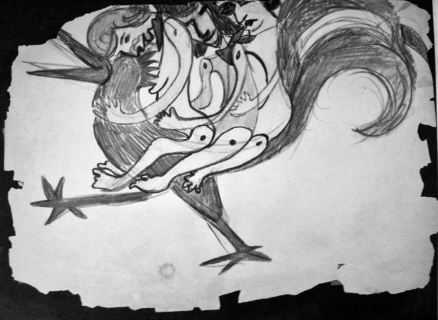
Esphyr Slobodkina, Lee Krasner Astride a Fighting Cock, 1934, Crayon sketch on manila paper for a large cartoon to decorate the artist and model’s costume ball. Using the obvious sexual metaphor of a female paper doll astride a cock, this sketch caught the sexual electricity in Lee Krasner’s relationship with Igor Pantuhoff. It shows Krasner as a triple threat—as three female figures, repeated as if in a cubist painting or film, mounted on a rooster’s back. Courtesy of the Slobodkina Foundations, Glen Head, New York. Photograph by Karen Cantor.
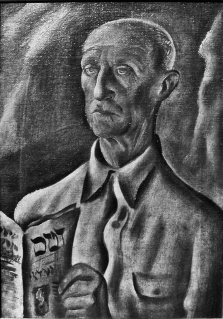
Igor Pantuhoff, Portrait of Joseph Krasner, c. 1936, Igor, who often visited Lee’s home, probably took a photograph of Krasner’s parents and used it to paint this portrait of her father, showing him holding a Yiddish book. Collection of the Pollock-Krasner House.

Igor Pantuhoff, Portrait of Lee Krasner, c. 1932, gouache on paper, 22 x 25. Judging simply from this sketch Pantuhoff did of Krasner posing in a sultry profile, he responded to the sex appeal that some of her contemporaries remarked upon. “With Igor, Lee had a sparkle and gaiety,” said Fritz Bultman. Collection of the Pollock-Krasner House.

Igor Pantuhoff, Ventilator #1, reproduced on the cover of Art Front, March 1936. Painted for the Federal Art Project, Pantuhoff’s composition and subject matter, depicting the rooftop of an urban building with water towers and chimneys, were quite close to Krasner’s painting Fourteenth Street of 1934.

Lee Krasner posing as a bohemian, c. 1938, photographer is possibly Igor Pantuhoff. Krasner liked the form of this antique cast-iron garden bench, which remained with her until the end of her life.
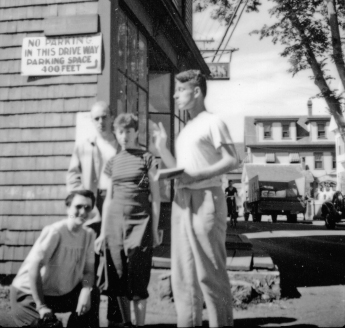
Perle Fine, George Mercer, Lee Krasner, and Igor Pantuhoff in Provincetown, Massachusetts, 1938, photographed by Maurice Berezov. Fine remained one of Krasner’s most supportive female friends.

Lee Krasner and Igor Pantuhoff on the beach, during the summer of 1938, when they and other friends spent their vacation in Provincetown on Cape Cod. As they sunbathed in the nude trying to warm up from the chilly waters, an unknown woman took their photograph, but, one friend recalled “there was no eroticism, nobody touched anybody else. Everyone was with their own.”
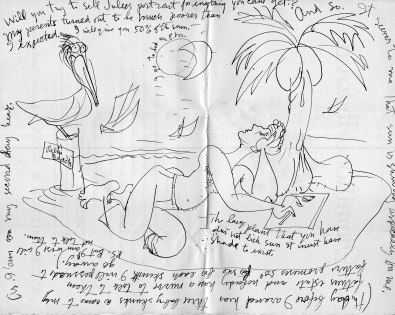
Letter from Igor Pantuhoff to Lee Krasner, October 24, 1939, Desperate, discouraged, and hoping for better fortune, Igor had gone to see his parents in Florida. He sent Krasner this letter illustrated by an elaborate sketch of himself reclining under the skimpy shade of a palm tree that he represented as an erect phallus. Collection of the Pollock-Krasner House.

Lee Krasner photographed by Maurice Berezov, c. 1940. Krasner, who worked as a model, developed a taste for elegant furniture and house plants, already evident here, even though she struggled to earn enough money on which to live.

George Mercer in his army uniform during World War II, when he and Lee Krasner (friends from the Hofmann School) corresponded at length and saw each other when he could get a leave. She was sympathetic and receptive to the Harvard-educated Mercer, who wrote discussing everything from Nietzsche and T.S. Eliot to his own frustrated passion to paint.

Lee Krasner before one of her abstract paintings, now lost, c. 1939–40. Photograph by Maurice Berezov.

Krasner supervised the production of nineteen store window displays meant to publicize courses offered in New York area schools to help the war effort. These courses were offered in the municipal colleges to prepare students for “service in the armed forces and in strategic war industries.” CR 200, Spherical Trigonometry, War Services Project Window, 1942, photomontage and collage, dimensions unknown, destroyed.

Jackson Pollock, Lee Krasner, Anna Krasner, Ruth Stein, William Stein stand in the back row, with Muriel Stein and her half-brother Ronald Stein in the front row with Pollock and Krasner’s dog Gyp, Springs, summer 1946.

Jackson, Lee, Gyp, and Caw-Caw (Jackson’s tamed crow) on Lee’s head, Springs, July 10, 1947. With their move to Springs, nature was a source of shared pleasure. Photograph by Ronald Stein.

Krasner and Pollock photographed in their Springs garden by Wilfrid Zogbaum, c. 1949.

Krasner and Pollock in his studio, 1950. Pollock stands in front of his painting Gothic; his canvas The Key (1946) is visible on the right side of this photograph by Larry Larkin, a portraitist and collector.

Lee Krasner, Stella Pollock, and Jackson Pollock in the Springs kitchen, Thanksgiving, 1950.

Jackson’s brother, Sande McCoy, and his wife, Arloie, posing with the artist James Brooks. Brooks took over the Eighth Street studio when Pollock and Krasner moved to East Hampton.

Lee Krasner and Jackson Pollock hold Raphael Gribetz, summer 1952. Joel Gribetz, M.D., and his wife, Helen, rented the house next door for the summer. She recalls Krasner as “most gracious.” Photograph by Willard B. Golovin. Courtesy of the Archives of American Art.

Lee Krasner in her Springs Studio in 1962. A series of drawings on paper in watercolor, crayon, pastel and oilstick from that time are visible on the windowed studio wall. Her canvas, Earth Green of 1957, is visible on the right wall. Photograph by Hans Namuth, Courtesy of the Center for Creative Photography, University of Arizona © 1991 Hans Namuth Estate.

The writer May Natalie Tabak and her husband, art critic Harold Rosenberg, both once shared an apartment with Lee and Igor. Later, May was a witness at the Pollocks’ wedding and Harold wrote about Pollock without naming him in his famous article, “The American Action Painters,” published in December 1952. Photograph by Maurice Berezov.

In the Spring of 1954, Patsy Southgate was a mother with two young children when she saw that Krasner was trapped in the house. She offered to give her driving lessons in return for painting instruction, so Krasner finally learned to drive. Photograph by Robert Beverly Hale, Springs, 1956.
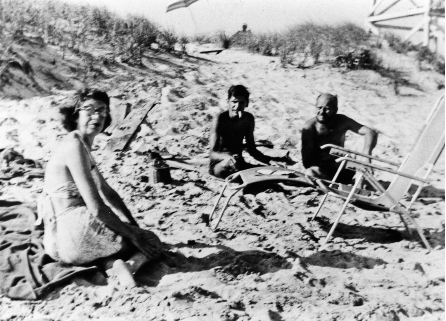
Lee Krasner, the painter and critic Paul Brach, and Jackson Pollock on the beach in East Hampton, New York, c. 1955, photographed by Miriam Schapiro.
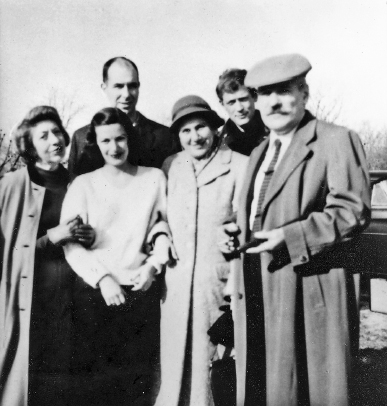
Lee Krasner, Abby and Bob Friedman, Annalee and Barnett Newman (in cap), and Sheridan Lord standing in the back next to Newman, Thanksgiving 1957, probably photographed by Cile Lord. Courtesy of B.H. Friedman.

Perle Fine, Willem de Kooning, and Ruth Kligman, summer 1958. It is not known if Krasner knew that Fine, whom she had convinced to move to East Hampton, was spending time with de Kooning, but because she lived in the small town, she surely heard that Kligman had moved on after Pollock’s death to have an affair with de Kooning, who was seen as Pollock’s chief rival. Photograph by Fine’s husband, Maurice Berezov.

Krasner standing on a ladder in front of an early state of The Gate (CR 342), July or August 1959. Photograph by Hallie Erskine.

Lee Krasner with Fritz Bultman (and Alfonso Ossorio in the background) at a party at the New York home of Martha Jackson, autumn 1959. After Jackson’s death, Lee spent several months living with Fritz and Jeanne Bultman in their townhouse on East Ninety-fifth street. This photograph was taken the year after Krasner showed with Martha Jackson.

Frank Lloyd, photographed by Donald McKinney. Krasner’s near contemporary and a tough businessman who had landed with the British army during the Normandy invasion, Lloyd was said to have twinkling blue eyes that helped to conceal his toughness. Krasner, however, probably recognized and respected his pugnacity because it mirrored her own.

Donald McKinney, the director of the Marlborough-Gerson Gallery in New York, often traveled with Krasner. In February 1967, they took a week’s trip to Tuscaloosa, Alabama, where she had a show at the university’s new gallery there. Photograph courtesy of Donald McKinney.

The art dealer and critic John Bernard Myers, was a close friend of Krasner’s. Photograph by Donald McKinney.

Lee Krasner with her friends the artist Terence Netter and the New York Times art critic John Russell at an art opening, c. 1977. Photograph courtesy of Terence Netter.

Lee Krasner with her painting Sundial with students Laurel Daunis and Cynthia Hall, along with the Fine Arts Department chairman Jack C. Davis, at the Atwood Gallery, Beaver College, April 4, 1974.

Lee Krasner as artist-in-residence at Marge Schilling’s Artists’ Conference at Dune Hame Cottage at Watch Hill, Rhode Island. One of the participants, Marjorie Michael, produced a portrait bust of Krasner, which she planned to include in a book called Valiant Women. Photograph by Dyne Benner, mid-July 1975.

Lee Krasner in her studio in front of an early state of Crisis Moment, c. 1972–80, oil and paper collage on canvas; Butterfly Weed, 1957–81, oil on canvas, is visible on its side on the left; photographed by Lilo Raymond.

Lee Krasner and Barbara Rose posing before a mural photograph of Krasner and Pollock for the show “Pollock-Krasner: A Working Relationship,” at Guild Hall, East Hampton, August 1981. Courtesy of the East Hampton Star.

Lee Krasner with To the North (CR 585), 1980, oil and paper on canvas, photographed by Arthur Mones, 1981.